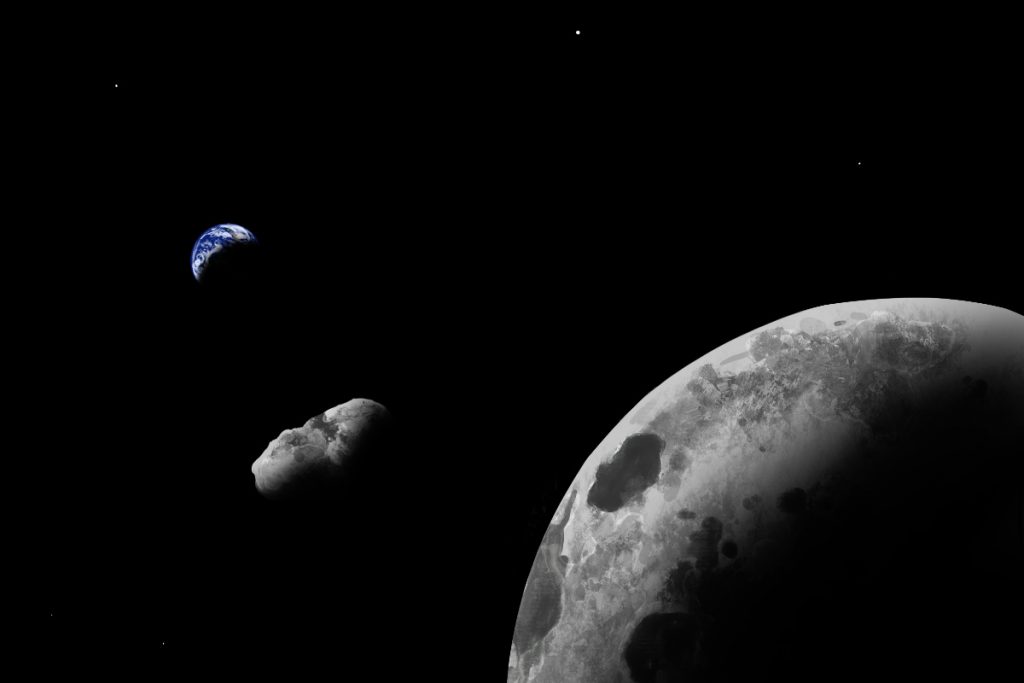The spectrum of Kamo`oalewa’s semi-moon shows striking similarities to moon rocks captured during the Apollo missions. This can only mean one thing…
Our Earth has many semi-moons. Natural objects that take a long time to complete a circle around the sun, such as our planet. With a diameter of 40 to 100 meters, Kamo’oalewa is the smallest known semi-moon of Earth, but it is also the closest and most stable known semi-moon to Earth. In a new study, researchers take a closer look at this space rock. This leads to an amazing discovery.
Earthly semi-moons
In addition to Kamo’oalewa, Earth is also home to many other semi-moons, including Cruithne; An asteroid about two kilometers in size and approaching Earth at a distance of 12 million kilometers. Most semi-satellites accompany the Earth only temporarily. However, temporary is a fairly broad term in this case. Even a semi-satellite with an unstable orbit has been traveling with the Earth for nearly 1,000 years. And most semi-satellite satellites do this for much longer; Sometimes thousands or even a hundred thousand years. Since most semi-satellites have only recently been found, more discoveries are expected.
Much about quasars is still unknown. That’s because these things are very faint and hard to see. For example, Kamo`oalewa is about four million times fainter than the faintest star visible to the human eye in the night sky. Kamo`oalewa was discovered in 2016 by NASA astronomers using the Pan-STARRS 1 telescope, located on the Hawaiian Haleakala shield volcano. The name is derived from the Hawaiian creation song.
research
In a new study, researchers decided to take a closer look at the semi-moon. By the way, something is not so easy. Because of its orbit, Kamo`oalewa can only be observed from Earth for a few weeks in April. In addition, due to its small appearance, the semi-moon can only be viewed with one of the largest telescopes on Earth.
broken piece
Last April, researchers carried the Binoculars Telescope – the world’s largest – on standby. This leads to a special discovery. Using the telescope, the team found that Kamo`oalewa’s pattern of reflected light — or spectrum — is very similar to that of moon rocks captured during the Apollo missions. This suggests that Kamo`oalewa may be a broken piece of our moon.
Lost
So it may be that a fairly recently discovered quasi-moon is a missing part of our natural satellite. Another indication of this is that Kamo`oalewa’s orbit is similar to Earth’s, but with a smaller inclination. In addition, its orbit is not typical for other asteroids orbiting the Earth. “It is very unlikely that a near-Earth asteroid will spontaneously enter a semi-lunar orbit like Kamo’oalewa,” said researcher Renu Malhotra. And if that happens, it is likely that this object will not remain in this particular orbit for long. “Maybe 300 years,” Malhotra continues. “But we think Kamo’oalewa took over this job about 500 years ago.”
The team is not yet sure how exactly Kamo`oalewa separated from our moon. There are also no other known asteroids that may have descended from our moon. “I looked at every nearby asteroid, but there was nothing to match it,” said study leader Ben Sharkey. Researchers are already working on a follow-up study to further study the origin of the semi-moon, hoping to unravel the mystery in the near future.
popular in science

“Coffee buff. Twitter fanatic. Tv practitioner. Social media advocate. Pop culture ninja.”











More Stories
“Ask at least one question in return.”
According to research, people with this sleep rhythm live longer.
13 municipalities in the province of Seville have mosquitoes carrying the Nile virus